- Home
- Antonia Fraser
Cromwell Page 15
Cromwell Read online
Page 15
Back once more at Cambridge, while in London the House of Commons writhed irresolutely, Cromwell at least continued to show an iron fist in a none too velvet glove. On the way down his troops had seized the high sheriff of Hertfordshire and despite furious local opposition bundled him off to prison in London for the crime of proclaiming Essex and his adherents traitors. Nor were old scores forgotten. His troops also paid a threatening visit to Cromwell’s old Huntingdon enemy, Robert Bernard, now a member of the Midland Counties Association, acting on information that Bernard was not quite so well affected to the Parliamentary cause as he might be. When Bernard protested at the insult, Cromwell came back coolly, without a hint of apology and with more than a suggestion of menace:
It’s most true, my Lieutenant with some other soldiers of my troop were at your house … the reason was, I heard you reported active against the proceedings of Parliament, and for those also that disturb the peace of this county and this kingdom… It’s true, Sir, I know you have been wary in your carriages: be not too confident thereof. Subtlety may deceive you [i.e. let you down]. Integrity never will.
Cromwell ended by declaring that he had not come in order “to hurt any man; nor shall I you. I hope you will give no cause. If you do, I must be pardoned what my relation to the public calls for.”16
It was in the spring of 1643, with peace negotiations with the King once more at a standstill, that Cromwell began that extension of his own troop into a regiment, which was to culminate in the formation of a positive army, the New Model. By the end of January he had risen to the rank of Colonel, probably receiving his commission from Lord Grey of Wark, whom Essex had made Commander-in-Chief of the forces of the Eastern Association. “Noble and active Colonel Cromwell” John Vicars called him at this period, adding: “Thus we see how God infuses and inflames into the hearts of his people, to show themselves ready and cheerful to come forth to help the Lord against the mighty Nimrods and hunting Furies of our time …”17 Certainly Cromwell’s activity was immense, and in all his efforts to raise and equip a fighting force to hold back the Royalist tide he was marked by a noble determination to put into practice those “good but impracticable” principles he had described to Hampden after Edgehill.
The evidence for Cromwell’s early persistence in this innovatory method of recruitment comes from, many different sources. Whitelocke described his men as being mostly freeholders and freeholders’ sons, who had engaged in this quarrel “upon a matter of conscience … And thus being well armed within, by the satisfaction of their consciences, and without by good iron arms, they would as one man stand firmly and charge desperately.” Manchester confirmed the story: in raising his regiment, Cromwell chose for officers “not such as were soldiers or men of estate, but such as were common men, poor and of mean parentage, only he would give them the title of godly, precious men … I have heard him often times say that it must not be soldiers nor Scots that must do this work, but it must be the godly to this purpose.” Richard Baxter described how from the first “he had a special care to get religious men into his troop” because these were the sort of men he esteemed and loved; and although this was his original motive, naturally from this happy and worthy choice flowed “the avoidings of those disorders, mutinies, plunderings and grievances of the country which debased men in armies are commonly guilty of”.18
In such a regiment the actual practice of religion was of the utmost importance and steps were taken to secure chaplains. These could sometimes combine the role with that of fighting men: Hugh Peter, the formidable Independent divine with a nice touch in both money-raising and rabble-rousing, was later to be seen with a Bible in one hand and a pistol in the other. It was a common saying of the time that “the Saints should have the praises of God in their mouths and a two-edged sword in their hands”. It was Richard Baxter once again who related how he was invited to become pastor to the officers of Cromwell’s troop; they intended to turn themselves into “a gathered church”.19 Although this incident has been advanced as evidence of the Congregational nature of Cromwell’s own churchmanship, i.e. his adherence to a particular “gathered body” rather than some looser form of Independency, Baxter actually attributed the invitation to James Berry. Formerly a clerk in a Shropshire iron works, Berry was now Captain-Lieutenant of Cromwell’s own troop. It seems therefore too isolated a reference upon which to build any firm conclusions concerning Cromwell himself. In the event Baxter declined, and the name of the subsequent choice is not known for certain, although it was possibly William Sedgewick.20
But from the first the discipline of troops in their private habits was in marked contrast to the general run of military custom. In April at Huntingdon, two troopers who tried to desert were whipped in the market place. By May the Parliamentarian newspaper Special Passages recorded with approval that Colonel Cromwell had “2,000 brave men, well disciplined; no man swears but he pays his twelve pence; if he be drunk he is set in the stocks, or worse, if one calls the other ‘Roundhead’ he is cashiered; in so much that the countries where they come leap for joy of them, and come in and join with them”. The very new nature of such demands upon the soldiery, traditionally in all ages if not exactly brutal and licentious at least drinking and cursing, may be judged from the last pious hope expressed in Special Passages: “How happy it were if all the forces were thus disciplined!” The five troops which made up Cromwell’s first regiment were complete as early as March 1643. No doubt with the certainty of godliness in mind, he had drawn heavily on his own family for his officers, not only Desborough but his cousin Edward Whalley, his nephew the young Valentine Walton and his own son Oliver. By September it had swollen to ten troops, and when fully completed, in April 1644, Cromwell’s regiment was apparently a double one with a full fourteen troops in a total of about 1,400 men.21
The first success of this disciplined and godly force was seen at the skirmish outside Grantham in Lincolnshire in May 1643. Cromwell had already taken part in the successful but not particularly noteworthy siege of Croyland just north of Peterborough, where some eighty Royalists, under the command of one of his own Cromwell cousins had dug themselves in with some hostages. The idea of the Grantham campaign was to attack the prominent Royalist stronghold of Newark, north-east of Nottingham, a pre-emptive strike against the Royalists themselves issuing forth to lambast the eastern counties. Cromwell was ordered north to join Lord Grey of Groby at Stamford, but Grey, to Cromwell’s outspoken disgust, failed to keep the rendezvous on the grounds that he would thus leave Leicester unprotected. By 9 May Cromwell’s troops, together with those of Lord Willoughby of Parham and Sir John Hotham, had gathered at Sleaford, on the road between Peterborough and Lincoln, preparatory to the attack. On n May they marched across the country west towards Grantham and late in the evening on 13 May found themselves confronted by the enemy at Belton, just outside the town. Cromwell wrote afterwards that his opponents had about twenty-one troops of horse and three or four of dragoons – mounted infantry, armed with musket and short swords like the foot soldiers, who would dismount to fire while each tenth man held the horses. He had only twelve troops, “some of them so poor and broken that you shall seldom see worse”. Some musket-fire was exchanged. Half an hour passed. Still the enemy, for all its superior force, did not advance. Cromwell decided to take the initiative himself. With his troops, he came on fast “at a pretty round trot” and as the enemy stood firm to receive them, charged fiercely forward. The unexpected ploy succeeded. The enemy were routed, and pursued by Cromwell’s victorious horse for two or three miles. Only two of their men were killed, to nearly one hundred of the enemy.
Parliament showed its gratitude and appreciation of the value of Cromwell’s work in blocking the Royalist advance on eastern England, ever the gateway to London, by ordering that the .Ł3,000 already levied in the Associated Counties and sent to Cambridge should be paid to Colonel Cromwell for the support of his forces. And in his report of his triumph, Cromwell set a precedent for the future by
ascribing his success to the workings of divine Providence. “God hath given us, this evening, a glorious victory over our enemies” he wrote that very night from Syston Park to a fellow commander. It was with a mere handful of men that it had “pleased God to cast the scale”.22
* * *
Ironically enough, it was as Cromwell’s reputation for military discipline rose with his own side, that his character as an undisciplined vandal was being set up by the Royalist pamphleteers. Their attack concentrated on an area where all soldiers are vulnerable, and the Puritan troops particularly so. It is to these early years of the war and the Irish campaign that the evidence for Cromwell the iconoclast, such as it is, belongs. From these sparse stories have sprung the much more formidable body of legends and folklore on the subject which surround and tarnish his name.* (* See especially G. F. Nuttall, Was Cromwell an Iconoclast? and Alan Smith, The Image of Cromwell in Folklore and Tradition.) The whole subject of iconoclasm, literally the destruction of images, is obviously an emotive one. There is no safer way to blacken a person’s reputation in the estimate of following generations than to attribute a wanton holocaust of wasted beauty to him. Very many of the pieces of vandalism now popularly attributed to Oliver Cromwell, whether castles knocked down, churches defiled, statues broken, are on examination so ludicrously misdated or occur in areas so far from any point he personally visited as to be hardly worth repetition, although one example of the former case may be cited Cromwell is sometimes credited with knocking down the tower and transept of Ely Cathedral presumably on the grounds that he undeniably once lived there and the tower is undoubtedly fallen. In fact, as has been pointed out earlier, it fell down in the fourteenth century.
The process of general iconoclastic identification has been accelerated by the unfortunate coincidence of Oliver’s kinsman Thomas Cromwell having been also associated with destruction, in this case of the monasteries. The Royalist clergyman writing of the depredations against Peterborough cathedral at Cromwell’s hands, at the end of the seventeenth century, thought it worth giving an aside on the subject of the Cromwell name “as fatal now to ministers as once it had been to monasteries”. By the eighteenth century in a tour of the Midlands, a Colonel Byng noted that many countrymen were puzzled about “the two Cromwells, the destroyer of the monasteries, and the destroyer of castles”.23 The truth is that as the folklore grows, one Cromwell is much like another. Assuredly in many instances Oliver has taken the responsibility in the popular imagination for the crimes of Thomas.
Then there are the stories of the general malevolence of the Parliamentary troops, at a period when Cromwell was far from being in general command, which have somehow adhered to his reputation. For reasons of his subsequent eminence, his is the name which has come to personify all such outrages. Of those charges specifically made at the time against him, the majority of them come from two Royalist newspapers of the period, Mercurius Aulicus which had a long run and many issues, and the short-lived Mercurius Rusticus. The references to Cromwell, which come of course from among a plethora of attacks on the Parliamentarians, include “most miserably defacing” Peterborough Cathedral, its organs and glass windows at the end of April 1643.
“There were more outrages than the Goths in the sack of Rome, and similar to those committed by the Turks on a Christian city”, fulminated Mercurius Rusticus, and the story was given wider circulation in the Reverend Simon Gunston’s history of Peterborough printed in 1688. “Down with the throne of Anti-Christ, down with it even to the ground” was the “black-mouthed cry” of the soldiers as they wrecked the pulpit. The soldiers played lascivious jigs upon the organ before pulling it down, while their companions danced in surplices. When bystanders appealed to Cromwell to stop this mayhem, he replied that the soldiers were doing God good service; he himself was said to have spied a surviving crucifix high up and pulled it down personally. The prayer books were as usual a target for attack, but one book which did survive was the ledger book, for which the precentor paid I0S. to a soldier in the troop of Cromwell’s son young Oliver to save it from obliteration. The soldier concerned duly inscribed it: “I pray let this scripture book alone, for he hath paid me for it. ... By me Henry Topcliffe, soldier under Captain Cromwell, Colonel Cromwell’s son. Therefore I pray you let it alone, April 22 1643.”24
Cromwell’s men were accused of profanations at Lincoln Cathedral, not only pulling down tombs and carvings but allowing their horses to be stabled there. There were the natural consequences of animal filth: it was suggested that Lord Kimbolton would sack his groom for letting even his stable become as dirty as Cromwell had made the house of God. At Cambridge also, in the spring of 1644, Cromwell was stated to have encouraged the tearing up of the Book of Common Prayer in the faces of the University clergy, and to have caused some beautiful carved structure which “had not one whit of imagery about it” to be demolished.25
The most believable incident of it all, in that Cromwell emerges from it as we know him in his later years, is that which occurred at Ely Cathedral in January 1644. There is also more documentary support for it than the mere enraged tattlings of the Royalist newspapers. Cromwell, like his fellow Puritans, found the practice of a choir-service “unedifying and offensive”. This was not based on any objection to music or singing as such. The attitude to the choir, like the attitude to the organs so often pulled down in the churches, was based on an objection to such practices in the house of God. It did not apply to music or even organs in the home, and Cromwell who was himself passionately fond of music, as Protector installed an organ at Hampton Court. Even so, despite his rooted hostility to Church music, Cromwell as Governor of Ely did not immediately react. On the contrary he warned Mr Hitch, the clergyman concerned, in a letter that his soldiers were likely to attempt the reformation of his cathedral in a tumultous or disorderly way if the choir-service continued. Far better, in Cromwell’s view, if the Reverend Mr Hitch catechized the people, read and expounded the Scriptures; if he ignored this advice, and above all gave more frequent subversive sermons, subsequent troubles would be Hitch’s own responsibility.
But Hitch ignored the warning. Whereupon Cromwell arrived in the middle of a choir-service with his hat on and addressed Hitch thus: “I am a man under authority and am commanded to dismiss this assembly.” Hitch, clearly a man of heroic obstinacy, ignored even this interruption and continued the service. At this Cromwell returned in a fury, and laying his hand on his sword, bade Hitch leave off his fooling and come down. In a great passion, he then proceeded to drive out the whole congregation.26 This was a Cromwell, first firm but reasonable, subsequently provoked into violent precipitate action which members of the Rump Parliament would have recognized.
The total evidence for Cromwell as an iconoclast is neither particularly extensive nor particularly impressive: in subsequent years his temperament certainly turned very much against such disorderly outrages, and Dean Stanley in his History of Westminster Abbey thought it worth pointing out that the monuments in the Abbey, which suffered so cruelly under Henry vm, remained uninjured under Cromwell. Even in this early period, Cromwell was dismayed by the dismantling of Nottingham Castle and told Colonel Hutchinson that he would have voted against it. At the same time the Cavalier Prince Rupert was actually nicknamed the “Prince Robber”, and burnt Cirencester and Marlborough with gusto.
In other ways, the Royalists by no means emerged from the war with stainless reputations: on the hoary subject of horses stabled in churches, of which the Parliamentarians are so often indignantly accused, it must be said that even that great Christian gentleman Montrose did this at Udney in Aberdeenshire. And as for the sanctity of the churches, both Lichfield and Hereford Cathedrals were fortified by the Royalists as instruments of war. Armour, powder and shot were frequently stored there, and both sides used churches to house prisoners, which often resulted in considerable damage to the interiors. Cranborne Manor House, for example, where according to the accounts of the Salisbury family Cromwell and his
followers did burn up the gates and “a little house in the orchard” in the course of a military campaign in October 1645, had already suffered at the hands of the Royalists earlier. It might be fairest to accept the verdict of John Evelyn who noted in his diary that “it is impossible to avoid the doing of very unhandsome things in war” – and then slipped away abroad for the rest of the hostilities.27
Yet there is a distinction to be seen between the mere aimless wrecking common to all soldiers in wartime, and the deliberate policy of iconoclasm pursued by the Puritans, which was after all backed up by orders of Parliament. One Puritan writer claimed ingeniously that it was worse for the Royalists to defile churches in the course of war than it was for his own side, because the Royalists actually believed such objects to be sacred. His point was valid only if careless destruction was really more reprehensible than that caused by a deliberate campaign: it is arguably less so. There was after all an official tradition of image-breaking in England since the time of Edward VI. One authority has pointed out that the iconoclasm of the seventeenth-century Puritans can only be understood as part of a long sequence in our history of nearly one hundred years and not “as is so often the case, as if it were a strange insensate fury, utterly divorced from its historical context”. The methods of the Parliamentary soldiers did not differ much from those laid down by the statute of Edward VI for breaking images.28
The enormous symbolic importance attached by the Puritans to the hated outward signs of “popery” – communion rails, crosses and the like has already been stressed. The deliberate immolation of these objects was an expression of their doctrinal revolt. Such tendencies were seen long before the war: early in 1641 for example, the communion rails and table at Wolverhampton were chopped up by a body of local people of quite low standing, including braziers and ironmongers, and two women. All admitted to the charge, and despite a fine, one of the braziers spoke up boldly to the magistrate and said that the table had been “made an Idoll of” and he would gladly chop it up again “if it were to do”. The war only increased the opportunity for such stalwarts, the desire was already there. A satirical ballad first put into print in 1646 tried to pour scorn on the Puritan soldiery by claiming these lines as their motto:

 Warrior Queens
Warrior Queens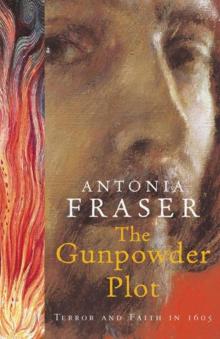 The Gunpowder Plot
The Gunpowder Plot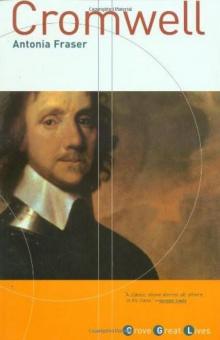 Cromwell
Cromwell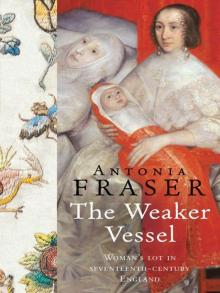 The Weaker Vessel: Women's Lot in Seventeenth-Century England
The Weaker Vessel: Women's Lot in Seventeenth-Century England Marie Antoinette: The Journey
Marie Antoinette: The Journey Oxford Blood
Oxford Blood Your Royal Hostage
Your Royal Hostage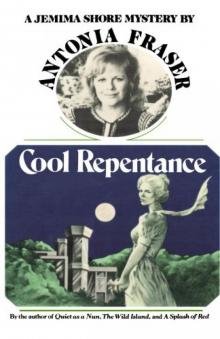 Cool Repentance
Cool Repentance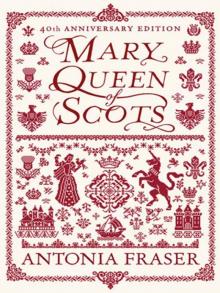 Mary Queen of Scots
Mary Queen of Scots Political Death
Political Death Royal Charles: Charles II and the Restoration
Royal Charles: Charles II and the Restoration My History: A Memoir of Growing Up
My History: A Memoir of Growing Up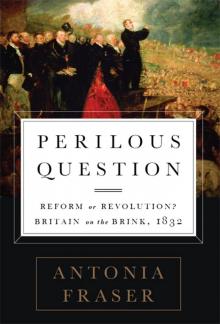 Perilous Question: Reform or Revolution? Britain on the Brink, 1832
Perilous Question: Reform or Revolution? Britain on the Brink, 1832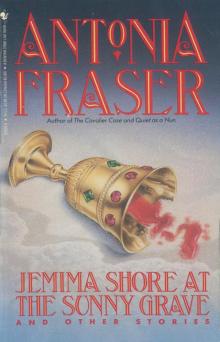 Jemima Shore at the Sunny Grave
Jemima Shore at the Sunny Grave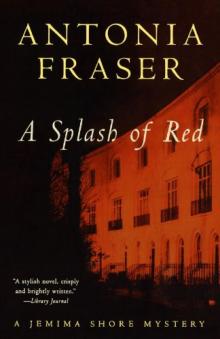 A Splash of Red
A Splash of Red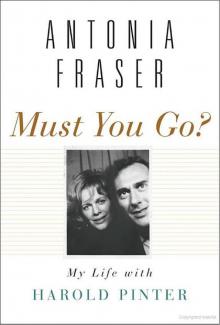 Must You Go?: My Life With Harold Pinter
Must You Go?: My Life With Harold Pinter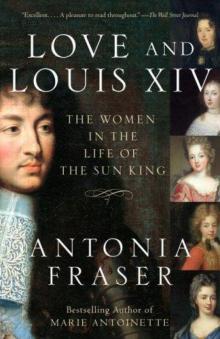 Love and Louis XIV: The Women in the Life of the Sun King
Love and Louis XIV: The Women in the Life of the Sun King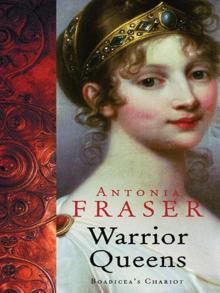 The Warrior Queens
The Warrior Queens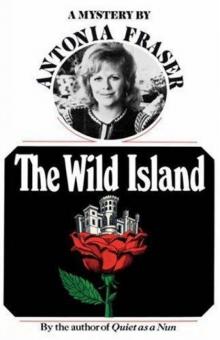 The Wild Island
The Wild Island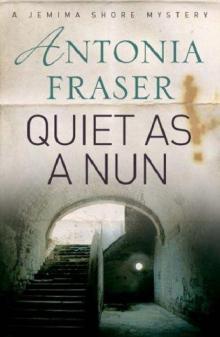 Quiet as a Nun
Quiet as a Nun Perilous Question
Perilous Question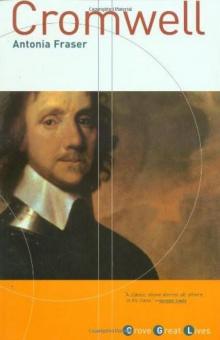 Cromwell, the Lord Protector
Cromwell, the Lord Protector Gunpowder Plots
Gunpowder Plots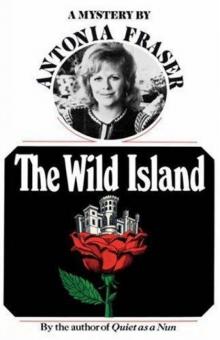 The Wild Island - Jemima Shore 02
The Wild Island - Jemima Shore 02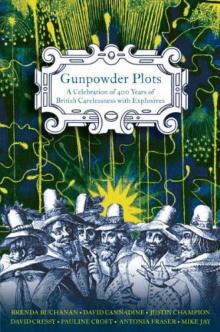 Gunpowder Plots: A Celebration of 400 Years of Bonfire Night
Gunpowder Plots: A Celebration of 400 Years of Bonfire Night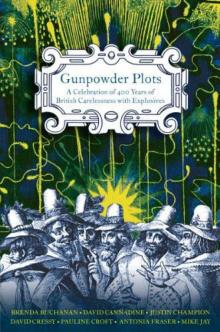 Gunpowder Plots_A Celebration of 400 Years of Bonfire Night
Gunpowder Plots_A Celebration of 400 Years of Bonfire Night Marie Antoinette
Marie Antoinette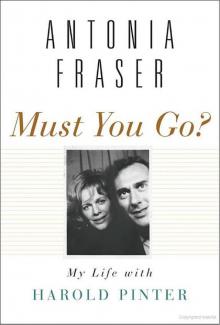 Must You Go?
Must You Go? My History
My History